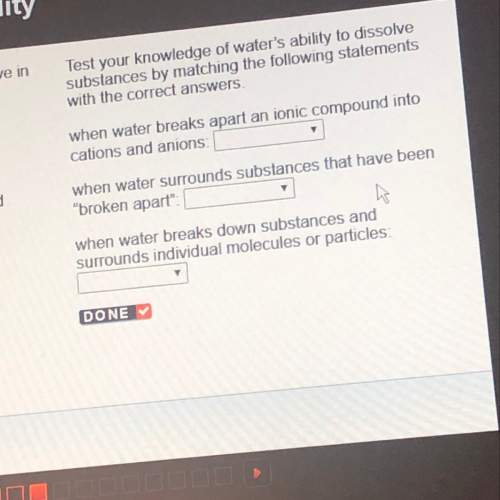
Chemistry, 27.10.2020 14:00, joelpimentel
Suppose that the graph of the function modeling the decay of rhodium-101 is extended to show the next 100 years. What will happen to the graph of the function as 100 more years pass? It will decrease until it touches the x-axis and then begin to increase. It will decrease until it touches the x-axis and then remain constant. It will cross the x-axis and continue to decrease. It will get closer to the x-axis but remain positive.

Answers: 3
Other questions on the subject: Chemistry

Chemistry, 22.06.2019 10:30, perezanthony2403
Which describes fat? a: a carbohydrate that produces energy b: a nucleic acid that directs cell function c: a lipid that stores energy d: a protein that speeds up a chemical reaction
Answers: 1


Chemistry, 22.06.2019 21:20, 50057543
Phosgene (carbonyl chloride), cocl2, is an extremely toxic gas that is used in manufacturing certain dyes and plastics. phosgene can be produced by reacting carbon monoxide and chlorine gas at high temperatures: co(g) cl2(g)⇌cocl2(g) carbon monoxide and chlorine gas are allowed to react in a sealed vessel at 477 ∘c . at equilibrium, the concentrations were measured and the following results obtained: gas partial pressure (atm) co 0.830 cl2 1.30 cocl2 0.220 what is the equilibrium constant, kp, of this reaction
Answers: 2

Chemistry, 22.06.2019 21:30, MJyoungboy
Harry lives in a city, and he has a lung condition known as asthma. on certain days, harry has to stay inside because pollutants in the air make it difficult for him to breathe. which of these pollution sources are nonpoint sources that might bother harry if he goes outside? choose the two that apply.
Answers: 3
Do you know the correct answer?
Suppose that the graph of the function modeling the decay of rhodium-101 is extended to show the nex...
Questions in other subjects:


Mathematics, 21.05.2021 14:00



Mathematics, 21.05.2021 14:00

English, 21.05.2021 14:00

Biology, 21.05.2021 14:00


Mathematics, 21.05.2021 14:00

English, 21.05.2021 14:00







